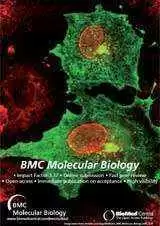
Celiac.com 06/25/2010 - Recent scientific evidence suggests that gut microbiota may play a significant role in celiac disease. To further examine the role of gut microbiota in celiac disease, an Italian research team conducted a study of children with celiac disease.
The research team included Serena Schippa, Valerio Iebba, Maria Barbato, Giovanni di Nardo,Valentina Totino, Monica Proietti Checchi, Catia Longhi, Giulia Maiella, Salvatore Cucchiara, Maria Pia Conte.
Celiac.com Sponsor (A12):
To gain a better understanding of any role played by dominant duodenal microbiota, the team analyzed the mucosa-associated microbiota of 20 children with celiac disease, both before and after treatment with a gluten-free diet. The compared the results with a group of 10 control subjects.
The team extracted total DNA from duodenal biopsies and amplification products of 16S ribosomal DNA. They then compared the results using temporal temperature gradient gel electrophoresis (TTGE). They assessed TTGE profiles by statistical multivariate analysis.
They found that, on average, patients with active celiac disease showed a significantly higher number of bands in TTGE profiles (P<0.0001) (n.b. 16.7 +/- 0.7), compared to patients with treated, or inactive disease (n.b. 13.2 +/- 0.8) compared to control subjects (n.b. 3.7 +/- 1.3).
Average inter-individual similarity indices were 54.9% +/- 14.9% for active disease patients, 55.6% +/- 15.7% for treated (inactive) celiac disease, and 21.8% +/- 30.16% for controls. Similarity index between celiac children before and after treatment with gluten-free diet was 63.9% +/- 15.8%.
Variation in microbiota biodiversity between active and remission state was P=0.000224. Between active celiac disease and control subjects, variation was P<0.001.
Patients with celiac disease showed higher populations of Bacteroides vulgatus and Escherichia coli, compared to control subjects (P<0.0001).
Overall, the results demonstrate a peculiar microbial TTGE array, coupled with substantially greater biodiversity of duodenal mucosa in children with celiac disease.
Further study is needed to assess any possible pathophysiological role for these microbial differences.
Source: Open Original Shared Link







Recommended Comments